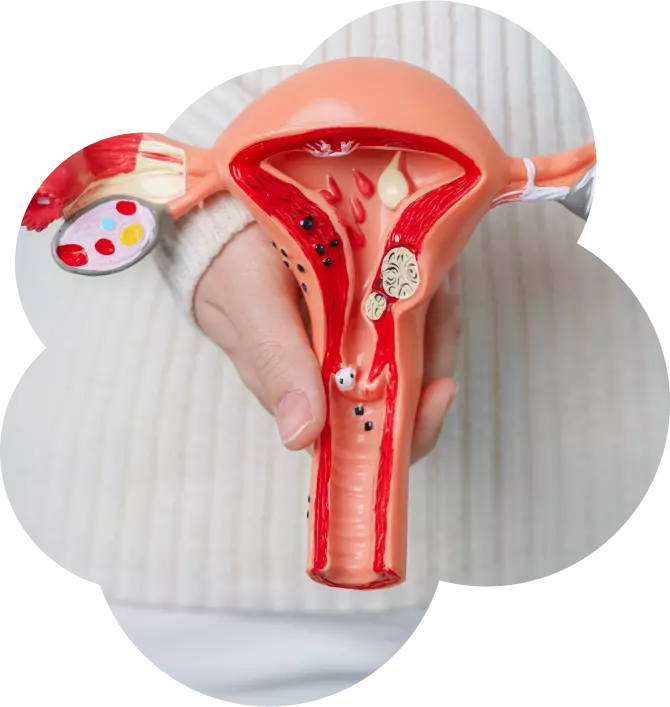
Dysmenorrhea is the term used to describe uncomfortable menstrual cycles that are marked by lower abdominal cramps. These cramps can vary in intensity, from slight discomfort to excruciating agony that makes everyday tasks difficult.
Often occurring shortly before and during menstruation, this illness may also include headaches, diarrhea, nausea, and vomiting. The most prevalent kind of dysmenorrhea, called primary dysmenorrhea, is usually brought on by elevated prostaglandin levels, which are compounds that resemble hormones and stimulate uterine contractions.
Less frequently, secondary dysmenorrhea can be brought on by underlying diseases such endometriosis or uterine fibroids.
The following are the major symptoms of Dysmenorrhea in women:


Many menstrual and reproductive health-related issues can lead to dysmenorrhea. Elevated prostaglandin levels, which are hormone-like chemicals involved in inducing uterine contractions during menstruation, are thought to be the main cause of dysmenorrhea.
Higher prostaglandin levels are frequently linked to primary dysmenorrhea, which happens in the absence of any underlying medical conditions. The uterus contracts harder as a result of these prostaglandins, producing excruciating cramping agony.
Several factors can make primary dysmenorrhea worse, such as smoking, having a thick monthly flow, and being young at menarche (the start of menstruation). Conversely, secondary dysmenorrhea results from underlying medical disorders that impact the reproductive system.
A complete medical history, a physical examination, and perhaps further testing to rule out underlying diseases are usually required for the diagnosis of dysmenorrhea.
Health History: Detailed questions about menstrual patterns, pain intensity, timing, and associated symptoms like headaches and gastrointestinal issues are asked.
Physical Examination: A pelvic exam is performed to check for abnormalities in the reproductive organs, including signs of conditions like endometriosis, fibroids
Diagnostic Tests: Additional tests such as ultrasound imaging or blood tests may be recommended based on the findings from the history and physical exam to rule out underlying conditions.


Effective management of menstrual pain is the main goal of treatment for dysmenorrhea. To relieve cramps and lower inflammation, this usually begins with nonsteroidal anti-inflammatory medicines (NSAIDs) that may be purchased over-the-counter, such as ibuprofen.
To manage menstrual cycles and lessen the severity of discomfort, doctors may prescribe hormonal contraceptives such hormonal IUDs or birth control tablets. Additional ways to relieve pain include heat treatment, consistent exercise, and nutritional supplements like omega-3 fatty acids.
It's crucial to make lifestyle changes like eating a balanced diet, controlling your stress, and drinking enough of water. If endometriosis or other underlying disorders are the cause of dysmenorrhea, surgical alternatives may be taken into consideration.
Remain Hydrated: To assist eliminate toxins and lessen bloating, which exacerbates menstruation discomfort, drink lots of water.
Heat Therapy: During menstruation, applying a heating pad or having warm baths might help relax the pelvic muscles and lessen cramping.
Frequent Exercise: To enhance blood circulation and lessen menstrual cramps, partake in frequent physical exercise.

